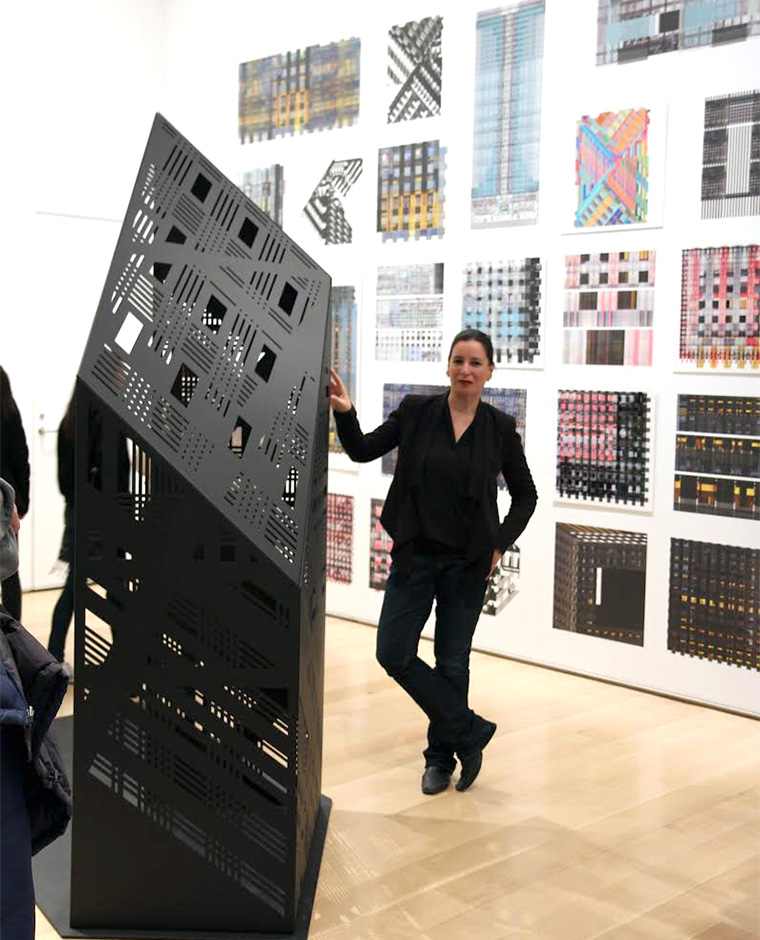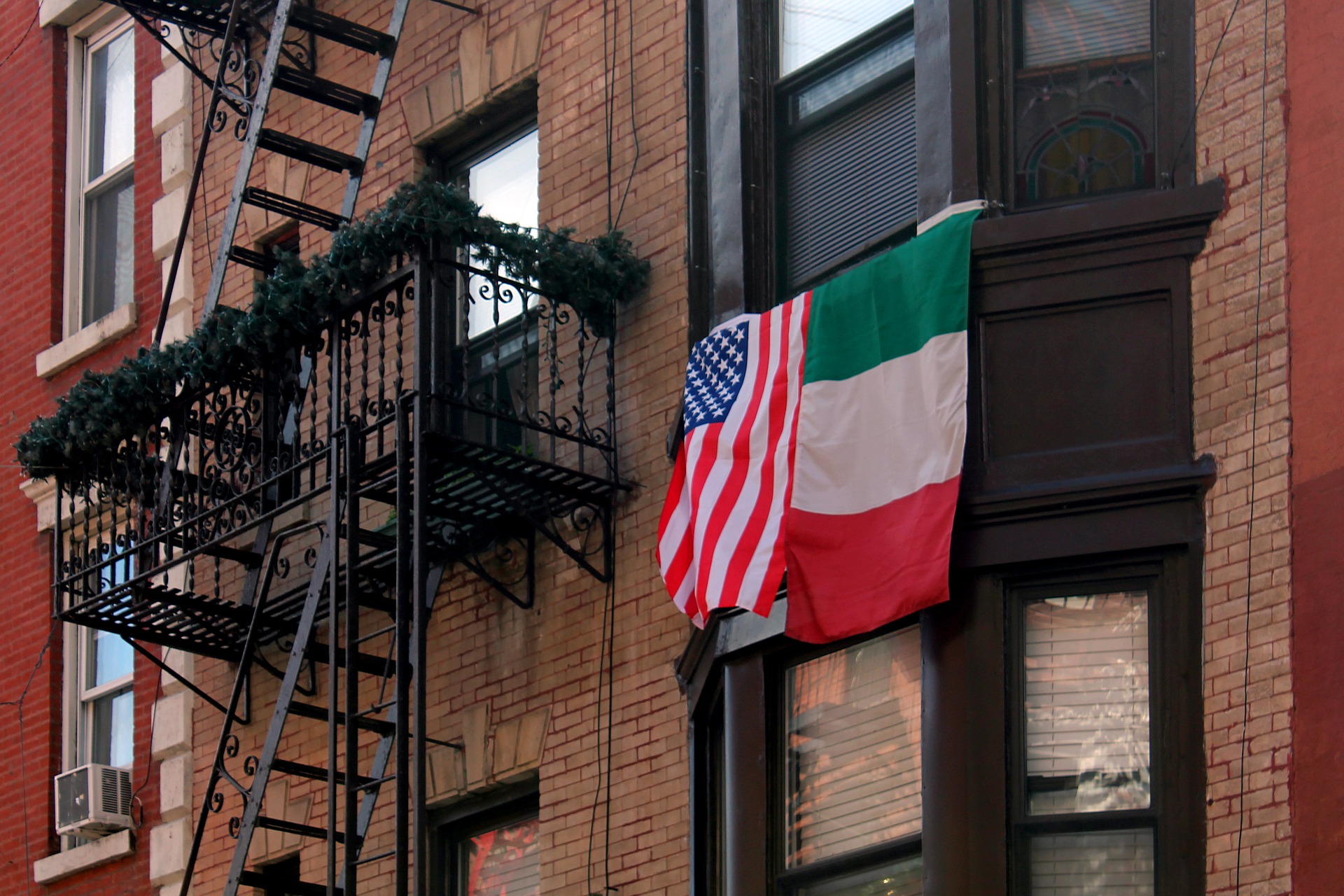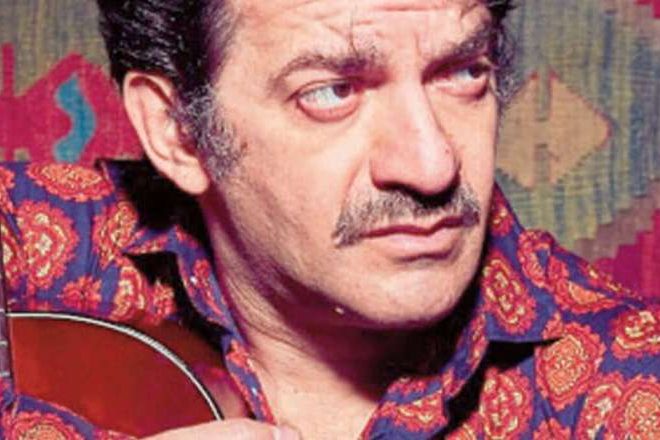Elena Manferdini, acclaimed architect and designer, grew up in Bologna, capital of the Emilia-Romagna Region in Italy.
Somehow the urbanistic eclecticism and theatrical quality of the landscape, made of medieval towers as well as a vast web of porticoes, must have tickled Elena’s imagination.
However, her upbringing and interests led the young woman towards civil engineering, until, at twenty-two years of age, her life took an unexpected turn: she won a nine-months scholarship to study architecture at UCLA.
What was planned to be just a formative “parenthesis” oversea, became a permanent life choice, as she successfully met Los Angeles’ need for fresh visual talent.
Currently, Manferdini runs “Atelier Manferdini”, an architecture firm/design office, whose projects can be admired worldwide.
In parallel with those, since 2003, she has been teaching at the Southern California Institute of Architecture (SCI-Arc), and now holds the Graduate Programs chair position, at the same campus.
Let’s hear about Elena’s busy schedule, as she chases after her multiple creative passions, directly from her.
Tell us about your cultural background. Was there a specific moment of realization, in which your career path became clear to you?
I come from Bologna, Italy, and moved here in L.A., when I was 22. I had already graduated from a Professional Engineering Degree at the University of Civil Engineering, in Bologna.
When I won a scholarship offered from UCLA, I embraced the opportunity to further my studies in the US and took a Master of Architecture and Urban Design from the prestigious L.A.’s campus.
My “switch” from Italian culture to American was fundamental to realize my career path, which turned from hard science to a highly creative field. Besides, American society and mindset were very open to that creativity.
That same transition affected the way I still work today: a blend between my Italian scientific upbringing and my American approach divided between art and architecture.

How did your decision to leave Italy for the U.S. materialize itself? What was challenging in settling in California and L.A., in particular?
The truth is that what I originally expected to be just a nine-months scholarship was renewed. Thus, I finished my three years Master’s program.
Afterwards, I accepted an offer from one of my professors and I worked in his office for the following three years.
Settling in Los Angeles was certainly challenging, cause of my young age. Eventually, I had to learn how to live off my scholarship.
However, I did love Californian weather, and – despite the hassle of not having a car for my first three years – I ended up liking L.A.
Last December 10-11, you took part to the international conference, Technarte. Please, sum up for us the essence of your speech.
My work is in between art and architecture and it often has some digital component. Therefore, it fit perfectly with the theme of the conference.
Technarte consists in a collection of like-minded people, who employ their imagination to change the perception of the world.
My speech, called “Superflat”, dealt with the relationship between flat paintings and large scale of architecture.
Over time, you established yourself as an international, multi-awarded designer/visual artist, with your projects, spanning from Asia, to US, passing through Europe. Is there a sort of “common thread” which unifies your work?
My work is pretty diverse, shifting constantly in scale, from industrial design to buildings’ planning, passing through artwork.
Somehow, design and architecture belong to the same field, and each project leads to next. So, for example, a small scale drawing later on becomes a building’s façade.
Among all your past projects, is there one (or a few), whom you’re particularly satisfied with and why?
Probably, one of the most intriguing project, whom I worked on internationally, was the interior of a three-story cruise boat, which sails on day trips to sightsee the natural scenery around Lake Biwa, in Japan.
I turned the floors and the ceiling into a bright, “Technicolor” space, as well as taking out the cabins, so to create an open platform, which offers a 360° view on the shore.
In that case, my vision aligned perfectly with the client’s one, and the execution was flawless. Besides, the trip to Japan enabled me to fully immerse in its different culture, and to explore the relation between nature and architecture which come with the project itself.
Among the local projects, I’ve just finished a work for the Zev Yaroslavsky San Fernando Valley Family Support Center’s atrium. It’s the first time that each of the eight departments of L.A. County, after a thirteen years long fundraising, have finally joined together to realize the 200,000 Sq. building.
Aside from working on the lobby, I realized part of the artwork for the exterior. Most of all, the social implication and impact of the project has been rewarding to me.
What are your biggest satisfactions in teaching? Do you ever feel that some of your cultural heritage gets “lost in translation” and cannot be passed on your students?
I love teaching and I would have never anticipated to become a professor. Currently, I teach at the Master’s program, and I taught at the Undergraduate Degree Program in the past (in both cases, we’re talking of adults eager to learn the profession).
To me, it’s very rewarding how you can have an impact in others’ lives, by sharing the subjects you love with like-minded people.
I remember how I posted on my Instagram and Facebook accounts, the news of being awarded with the Lexus Design Award, in Tokyo. Former students of mine, from a decade earlier, came to see me and to listen to my lecture. That was very moving!
Teaching is gratifying on both a personal and intellectual level: I constantly push my students to go beyond themselves and they do the same with me.
I think that “getting lost in translation” happens to everyone, who was trained in a different country. You bring some of your heritage with you and some of it come across, through your teaching and your works, while some other does not.
Besides, in such a cultural melting pot like L.A., you get lost in translation in every direction.
My students come not only from the States, but from all the five continents. Personally, I find that to be enriching: everyone brings to the table different visual references and habits, adding to the complexity of the creative process.
That works the other way around, as well. In fact, over the years, whom I spent here, I’ve absorbed elements, whom I’m sure would not be understood in Italy.
What are your working at, right now, and how does your 2016 look like?
I’m working at an apartment complex, made of four units, in the San Fernando Valley. At the same time, I’m realizing two façades in West Hollywood: one for an hotel and one for a residential project.
I’m at the final round of a façade project in Seoul, Korea and of another one in Miami, Florida.
My 2016 is going to kick off with three exhibitions, featuring my works: the first one, called Building Portraits, will open on January 25th, at the brand new Industry Gallery, in the arts’ district of Downtown L.A. It is going to showcase a collection of facades’ drawings, whom I’ve been realizing in the last two years. They are both artwork but also speculative work on facades.
In conclusion, do you keep in touch with the local Italian-American community? Are you member of some association/ organization, such as the Italian Cultural Institute of L.A.?
For a while, I was closer to the IIC, especially when Francesca Valente was the director. She was an arts, architecture and design lover and very active in organizing events, in partnership with various local institutions.
Currently, I keep in touch with several Italian friends, who, like me, moved here after graduation.






























